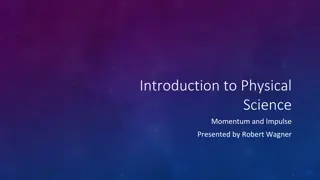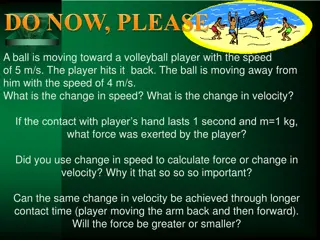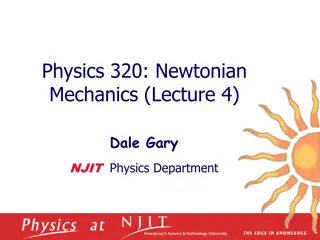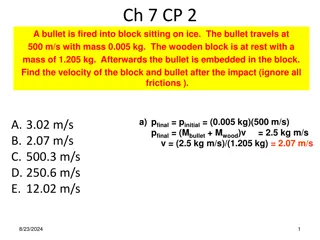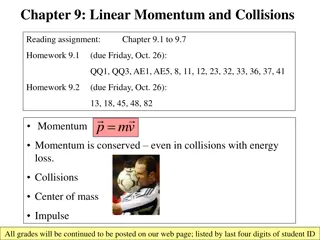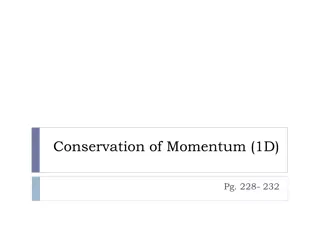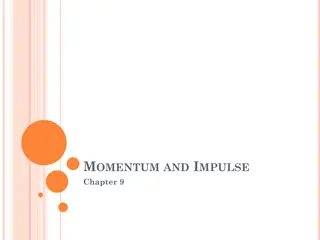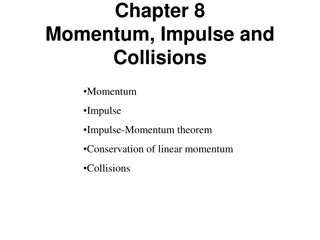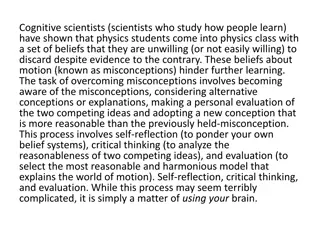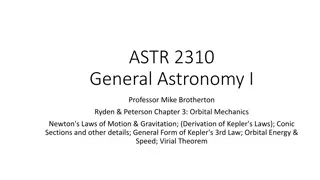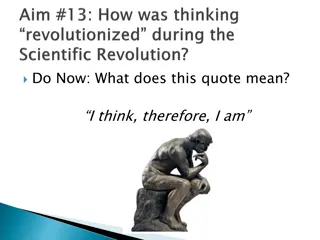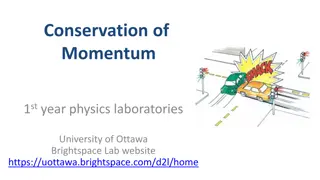Understanding Momentum and Newton's Laws in Physics
Momentum is the product of mass and velocity, influencing an object's resistance to changes in motion. Newton's second law relates force to acceleration, while impulse is crucial in altering an object's momentum. Explore examples illustrating these concepts in action.
Download Presentation

Please find below an Image/Link to download the presentation.
The content on the website is provided AS IS for your information and personal use only. It may not be sold, licensed, or shared on other websites without obtaining consent from the author. Download presentation by click this link. If you encounter any issues during the download, it is possible that the publisher has removed the file from their server.
E N D
Presentation Transcript
Momentum (p) Product of mass and velocity Equation p = mv Vector quantity with direction the same as v Unit kg-m/s
Relationship with Inertia More momentum something has, the harder it is to change its inertia Greater effect it will have if in an impact or collision A force is required to change an object s momentum (increase it, decrease it, or change it s direction)
Example 1 Is it possible for a bullet and a car to have the same momentum? What velocity would a 500 kg car have to experience to have the same momentum as a 25 g bullet traveling at 370 m/s?
Newtons 2ndLaw F = ma a = v/t F = m(vf vi) / t F = (mvf mvi) / t Ft = mvf mvi
Impulse Impulse is defined as the force times the time over which the force acts Impulse = Ft = mvf mvi In order to change the momentum of an object, two quantities are important (Force and time)
Example 2 For a top player, a tennis ball may leave the racket on the serve with a speed of 55 m/s. If the ball has a mass of 0.060kg and is in contact with the racket for 0.004 s, what is the force on the ball?
Example 3 Water leaves a hose at a rate of 1.5kg in 1.0 s with a speed of 20m/s and is aimed at the side of a car, which stops it. What force is exerted by the water on the car?
Example 4 If the water splashes back from the car at 15m/s, what is the force on the car?


